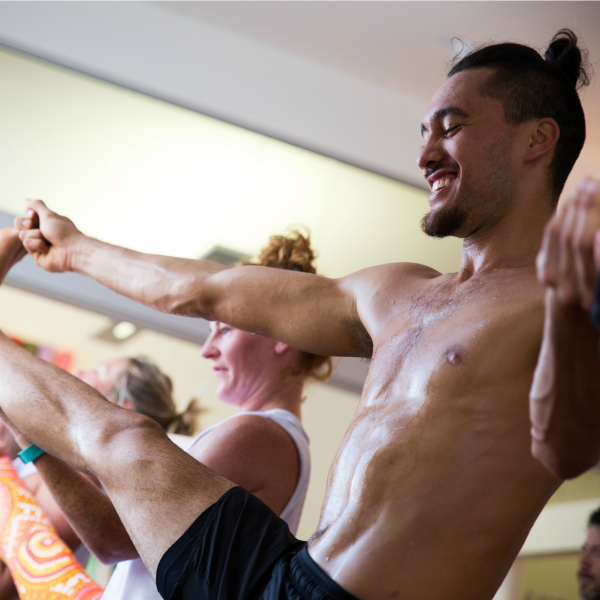16 Oct PRANA VAYUS: THE FIVE CURRENTS OF ENERGY

Written by Cat Woods ・ 10 mins
The goal of all yogis is ultimately enlightenment, or Samadhi. Through awareness of breath and body, the ancient yogis discovered that the life force energy (prana) could activate Kundalini energy and also lead to optimal health and wellbeing when focused upon and nourished.
Prana can be considered as having five components, which translate from the sanskrit Vayus as Winds. Each of the Vayus of prana have subtle differences in function and direction of flow in the body. Through focusing on each of these Vayus in our practice, this deeper awareness enriches the quality of our breath, movement and sense of body-mind-spirit connectedness.
The five Vayus are explained below. Their function within the asana, or physical practice is also explored.
The two main Vayus are Prana-Vayu and Apana-Vayu.
Prana-Vayu is centred in the ajna chakra, the third eye. Its energy is inwards and upwards flowing. Prana-Vayu is responsible for our experience of the five senses, air, food and thoughts. It governs the brain and eyes. Try closing your eyes and inhaling with a focus on energy flowing up the spine from the belly to the centre of the eyebrows, the third eye.
In asana practice, Prana-Vayu raises, extends and opens the torso, head and arms.
Apana-Vayu is located in the pelvic floor and lower abdomen. The flow of Apana-Vayu is downwards and external. While Prana governs the brain, Apana governs reproduction, digestion and elimination of toxins. To connect with Apana-Vayu, inhale deeply and on an exhale, feel the energetic downward flow from the crown of the head to the base of the spine.
In asana practice, Apana-Vayu develops strong roots and a sense of the lower body being drawn to the earth.
Vyana-Vayu resides in the heart and lungs. It flows from the centre of the body to the external limbs. Vyana-Vayu governs circulation: blood, oxygen, nutrients. To raise awareness of Vyana-Vayu, inhale as you imagine energy travelling from the abdomen towards the arms, legs, fingers and toes.
In asana practice, Vyana-Vayu develops strong, rhythmical, flowing movement balanced with a sense of ease and effortlessness (sukha).
Udana-Vayu is located in the throat and holds responsibility for speech and self-expression (also highly aligned with the fifth chakra). This subtle energy of prana flows through the neck and head and flows in a circular direction.
In asana practice, Udana-Vayu is a reminder to hold the spine in an elongated, supported position that enables correct alignment throughout the body whether standing, sitting, lying or kneeling.
Samana-Vayu resides in the abdomen. Its flow is inward from the outer edges of the body towards the centre, or the navel. Samana-Vayu directs digestion and the absorption of all substances: air, food, emotions, thoughts and sensory experiences. To connect with Samana-Vayu, inhale and as you exhale feel energy flowing from the limbs towards the belly.
In asana practice, focus and attendance to Samana-Vayu enables a sense of ease and lack of force or excessive pushing and striving. This, in turn, enables healthy function of the central nervous system which nourishes the quality of breath and movement.
Each of the five energy currents of prana are developed through focus and loving attention. Cultivating a mindful practice where your attention is drawn inwards to the subtle body rather than allowing your mind to wander and be distracted will enrich your practice in every sense.
Are you interested in delving into yoga philosophy? Power Living’s Yoga Teacher Training is a transformational journey that will challenge you and change your life! Find out more and check out upcoming courses near you.



